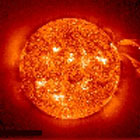 |
|||||||
|
|||||||
|
IPCC at a crossroad with fifth climate change reportWilliam KininmonthThe meeting of the Intergovernmental Panel on Climate Change in Stockholm this week is arguably the most important in its 25-year history. The meeting is to finalise the fifth IPCC assessment report, the UN's formal advice to governments. Since the release of the fourth report in 2007, the IPCC finds itself battling to retain credibility as a source of independent advice to governments. Parliamentary and semi-judicial inquiries were held in Britain following unintended public access to email exchanges held by the Climate Research Unit of the University of East Anglia. The emails involved scientists and others associated with the IPCC process. No wrong-doing was attributed to the scientists but questions of probity and bias were left unanswered. A review panel drawn from international scientific academies found that the IPCC process should be more open and accountable. For example, the inclusion of an alarmist report about melting of Himalayan glaciers turned out to be unfounded; it was not based on peer-reviewed research as required for inclusion in the report. More recently, a pause in global temperature rise over the past 15 years has raised doubts about the veracity of climate projections that have been a hallmark of IPCC reports since its first in 1990. Notwithstanding the confidence of dangerous global warming expressed in the IPCC's 2007 report, governments meeting in Copenhagen in 2009 for the UN's Climate Change Convention and Kyoto Protocol failed to reach consensus for co-ordinated international action on reducing industrial emissions of greenhouse gases. The seeds of the IPCC's problems were sown in its 2001 third assessment. There it claimed, even though temperatures had not started to rise until the mid-1970s: "There is new and stronger evidence that most of the warming observed over the last 50 years is attributable to human activities." The basis for the claim resided in confidence that computer models could simulate the climate system and project future climate change as atmospheric carbon dioxide concentrations increased. Internal variability of the climate system (i.e. the interaction between the ocean and atmosphere motions) as a source of change was dismissed because, with changing carbon dioxide concentrations and aerosol loadings, the computer models were able to replicate the global temperature of the 20th century. Despite an ability to replicate 20th century temperatures the computer models were untested against independent data, a prerequisite for validating a forecasting procedure. The apparent consistency of temperature sensitivity to carbon dioxide increase during the course of their development raised confidence (perhaps falsely) in the veracity of the climate models and their projections. The beginnings of the pause in previous global temperature rise was apparent by the time of the 2007 report but it was ignored by the IPCC authors. They confidently stated that "most of the observed increase in global average temperatures since the mid-20th century is very likely due to the observed increase in anthropogenic greenhouse gas concentrations", where "very likely" was given a probability of greater than 90 per cent. The course of global temperature change is now below the lowest values in the range of earlier projections. The continuation of the global temperature pause for 15 years needs clear and unambiguous explanation from the IPCC. There is an obvious explanation but previously rejected – natural internal variability of the climate system. Climate records point to natural climate cycles. These range from the El Nino-Southern Oscillation of the equatorial Pacific Ocean on the interannual scale; through the multi-decadal oscillations of the Pacific, Atlantic and Arctic basins; to the multi-centennial scales of mediaeval warmth, the Little Ice Age and the current warming. None of these can be simulated by current climate models. It is incumbent on the IPCC to demonstrate without obfuscation that Earth's climate system is as sensitive to carbon dioxide as the models suggest it is; that the temperature pause is an aberration possible within the envelope of uncertainty. Without such a clear demonstration governments will only further lose confidence in the IPCC and its policy advice. Around the world, governments are drawing back from previous initiatives to cut greenhouse gas emissions. The Abbott government's plan to repeal Australia's carbon tax is just the latest. There seems little incentive, following Copenhagen, for governments to mount national or coordinated international action to reduce greenhouse gas emissions. William Kininmonth is a meteorologist and former head of the National Climate Centre. This article was first published in The Age on 25 September 2013. |
|
|



